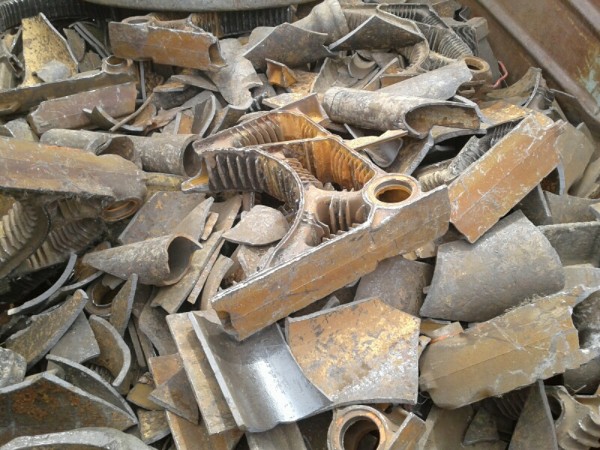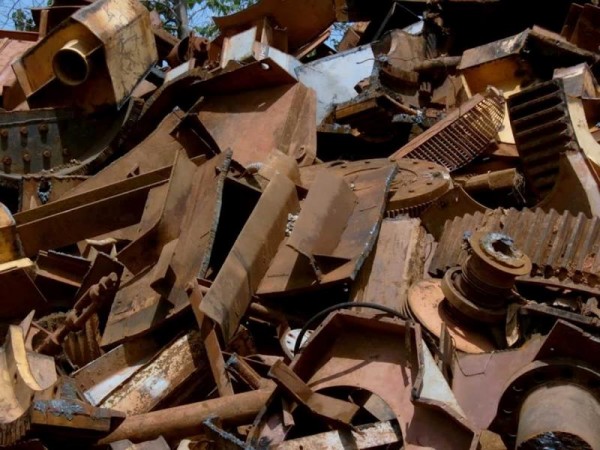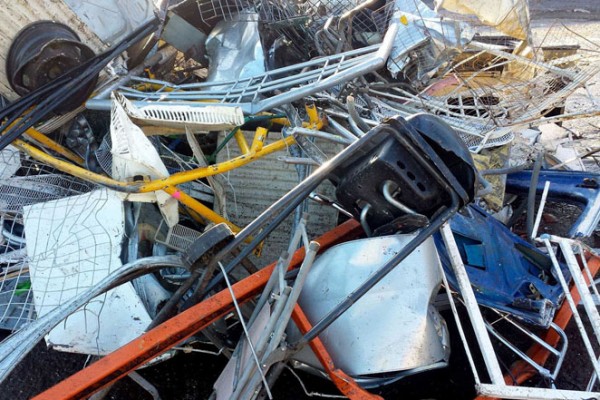Iron recycling
Iron is one of the world’s most recycled items. It’s a ferrous material with highly magnetic properties. Iron is highly sought after because it can also be used to create other metals, like steel (an iron alloy containing carbon). Scrap iron is also used to produce copper in a cost-effective process, that has a low impact on the environment.
At ASM Metal Recycling we take all grades of iron for recycling that can be segregated and shredded, ready to be melted down and purified for reuse.
Click here to sell
your scrap iron

Why recycle iron with ASM?
The recycling of iron has become a vital part of the 21st century steel industry; improving its profitability while minimising its impact on the wider environment. The use of secondary ferrous metals instead of ore extraction greatly reduces CO2 emissions, as well as energy and water consumption and overall air pollution. Put simply, the recycling of existing scrap iron into steel makes for more efficient use of our planet’s natural resources.
Get the best price possible for scrap metal
At our recycling centres, we always offer our customers the most up-to-date prices for iron. We specialise in scrap metal recycling and have done for over 55 years. Learn more about scrap metal prices to see how we calculate the price of your scrap.
Eco-friendly approach to recycling scrap metal

We take a green approach to help our customers and environment. ASM is:
- Fully accredited with the ISO 14001 and ISO 9001
- Fully licensed by The Environment Agency
- All our sites are registered and 100% compliant with the Scrap Metal Dealers Act 2013
Efficiency with ASM
We use the latest processing technology to make sure our sites and processes are the most energy and time-efficient. We also work to improve the safety and efficiency of recycling all scrap metals and vehicles.

What iron items can be recycled?
The most-commonly recycled iron items include:
- Scrap materials following industrial processes
- End-of-life containers
- End-of-life vehicles
- End-of-life appliances
- Industrial machinery
- Construction materials
The ferrous metal recycling process, used in this case for scrap iron, is broken down into five steps:
Sorting
As it is magnetic, iron can be quickly separated from other recyclable metals within a metal recycling facility using powerful magnetic belts.Shredding
Shredders feature rotating magnetic drums that extract iron and steel from a mixture of metals and other materials.Media separation
The next level of separation involves electrical currents, high-pressure air flows, and liquid floating systems. Anything that has a protective layer of any other metals (such as a drinks can) is removed and recycled independently using these plus other processes.Shearing
This involves hydraulic machinery which creates pressure to cut the thickest, heaviest pieces of iron: the type recovered from railway lines and cruise liners. Other cutting techniques might be used including plasma arc recycling, a relatively new type of waste treatment that involves heating waste to super-high temperatures to produce gas that can be burned for energy and solid waste for building.Baling
This process involves the compacting of iron products into large blocks, making them significantly easier to move and transport.
Get in touch today
If you have end-of-life vehicles or any other type of scrap iron, ASM Metal Recycling can give you the best possible prices. We use the most advanced digital scales for accurate weight and value of your scrap iron, guaranteeing you the fairest price.
Find your local depot here, or check out our scrap metal collection services.